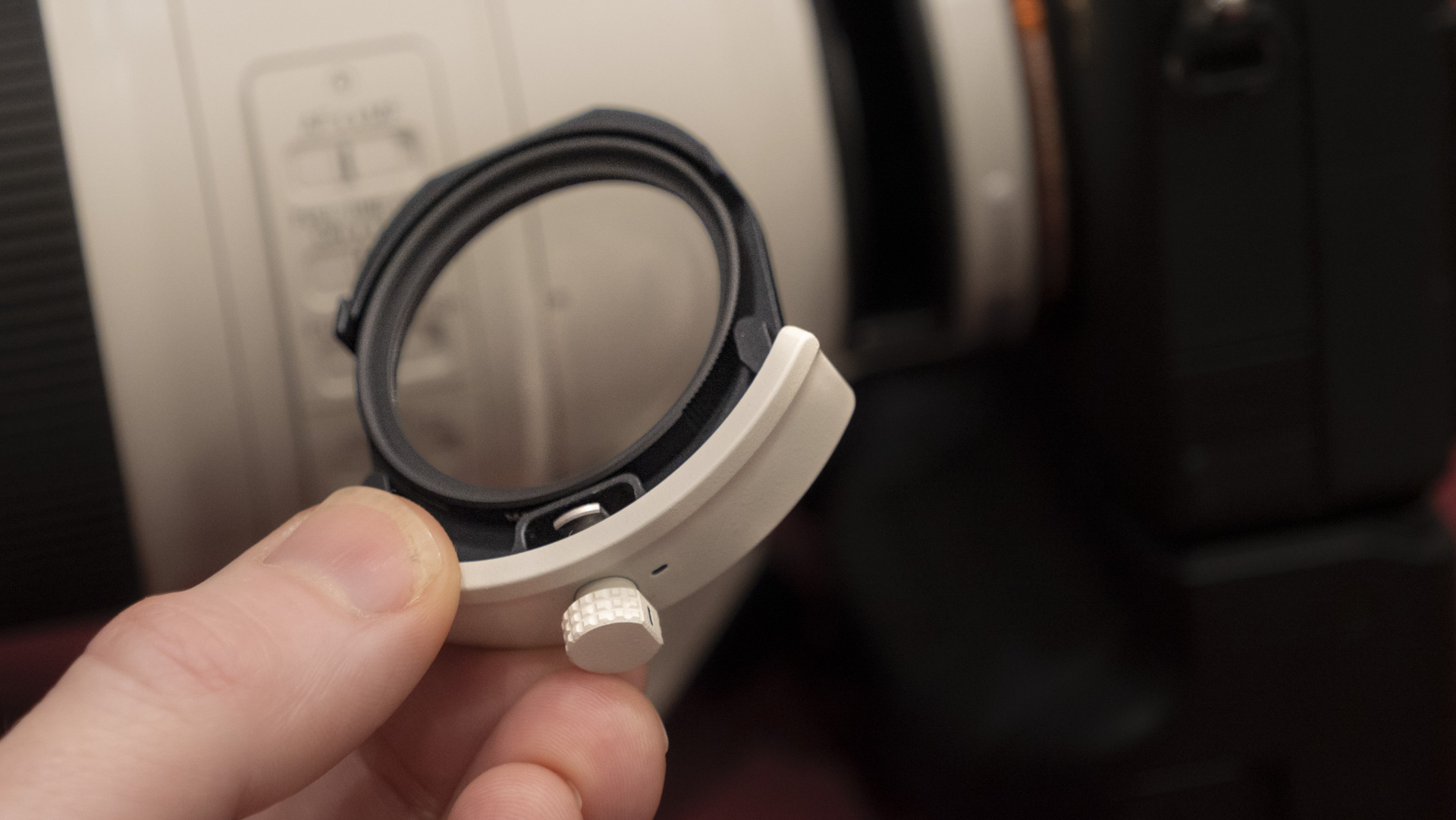Sony unveils world’s lightest f/2.8 telephoto lens for sports and wildlife shooters
The new Sony FE 300mm F2.8 GM OSS looks like a powerhouse

Sony has announced its 19th professional 'GM' lens in the shape of the FE 300mm F2.8 GM OSS. It's the widest of three telephoto prime lenses with wide aperture – sitting below the FE 400mm F2.8 GM OSS and FE 600mm F2.8 GM OSS – and offers the kind of image quality and performance demanded by professional sports and wildlife photographers.
It is in fact the lightest 300mm f/2.8 lens around, weighing in at 51.9oz / 1,470g without the tripod collar. To put that in perspective a little, the Sony FE 400mm F2.8 lens is around twice the weight at 102.1oz / 2,895g.
I had some brief hands-on time with the lens ahead of its announcement, and it offers a lovely balance paired with the Sony A1 mirrorless camera (pictured below). A total weight of around 88oz / 2,500g is totally manageable to work with handheld for extended periods.


The Sony FE 300mm F2.8 GM OSS costs £5,800 in the UK, and is supplied with a lens hood, soft case and a new lens strap. It will be available from early 2024. At the time of writing we don't have US or Australia pricing, or an exact release date, but we'll update this article with those details as soon as we get them. It's a high price for a high-quality lens, but very much in line with comparable DSLR lenses.
Whether you're panning and tracking fast cars or erratic vertical movement with athletes, handheld shooting ensures the fastest possible response to the action, and the FE 300mm F2.8 is very much designed for handheld shooting. The lovely balance of camera and lens is aided by the lens's optical construction, which places the majority of the lens elements at the rear of the lens in line with the tripod collar, which avoids the FE 300mm F2.8 being front-heavy.
This is the latest in a line of lighter-than-ever lenses from Sony (though at 265mm in length it's not the shortest of its kind), but naturally there's more to the 300mm F2.8 than its world-beating weight.
A complex lens structure comprising 20 elements in 16 groups, with Sony's best Nano AR II coating, renders the kind of image quality that pros demand, with the MTF charts I saw displaying edge-to-edge clarity. In other words, you can crop into the edge of a picture and enjoy the same kind of image sharpness as in the very centre.
There are 11 blades forming a circular aperture at the maximum f/2.8 setting, so bokeh should appear lovely and round, though I'll know more after shooting some pictures.
Sign up for breaking news, reviews, opinion, top tech deals, and more.



It's also built to pro standards, and the weather-sealed optic is adorned with an array of dedicated controls, including three SteadyShot stabilization modes, no less than four customizable focus hold buttons, and a direct manual focus (DMF) control. There's also a new function ring that enables you to switch between full-frame or APS-C formats, or maintain a constant, steady focus speed.
Instead of a front filter thread, the FE 300mm F2.8 utilizes a slot-in filter design, positioned at the rear, which makes a lot of practical sense, particularly cost efficiency. You don't get the protection afforded to the front lens element by a screw-in filter, but the gargantuan lens hood will do most of that protective work for you anyway.






This wouldn't be a pro bit of Sony gear without some serious autofocus capabilities, and the FE 300mm F2.8 packs two XD linear motors that can shift the chunky lens elements with precision and speed. Put simply, the lens ably supports the class-leading autofocus performance of Sony's best mirrorless cameras.
You can also add a 1.4x or 2x teleconverter to extend the maximum possible focal length, at the cost of the f2.8 maximum aperture. For example, with the 2x teleconverter attached, you have an effective 600mm f/5.6 lens.
It all sounds very impressive, and I have no doubt that a number of professional sports and wildlife photographers armed with Sony gear will be taking a very close look at it; for the rest of us, it's one to admire from a distance.
You might also like

Tim is the Cameras editor at TechRadar. He has enjoyed more than 15 years in the photo video industry with most of those in the world of tech journalism. During his time as Deputy Technical Editor with Amateur Photographer, as a freelancer and consequently editor at Tech Radar, Tim has developed a deeply technical knowledge and practical experience with cameras, educating others through news, reviews and features. He’s also worked in video production for Studio 44 with clients including Canon, and volunteers his spare time to consult a non-profit, diverse stories team based in Nairobi. Tim is curious, a keen creative, avid footballer and runner, and moderate flat white drinker who has lived in Kenya and believes we have much to enjoy and learn from each other.